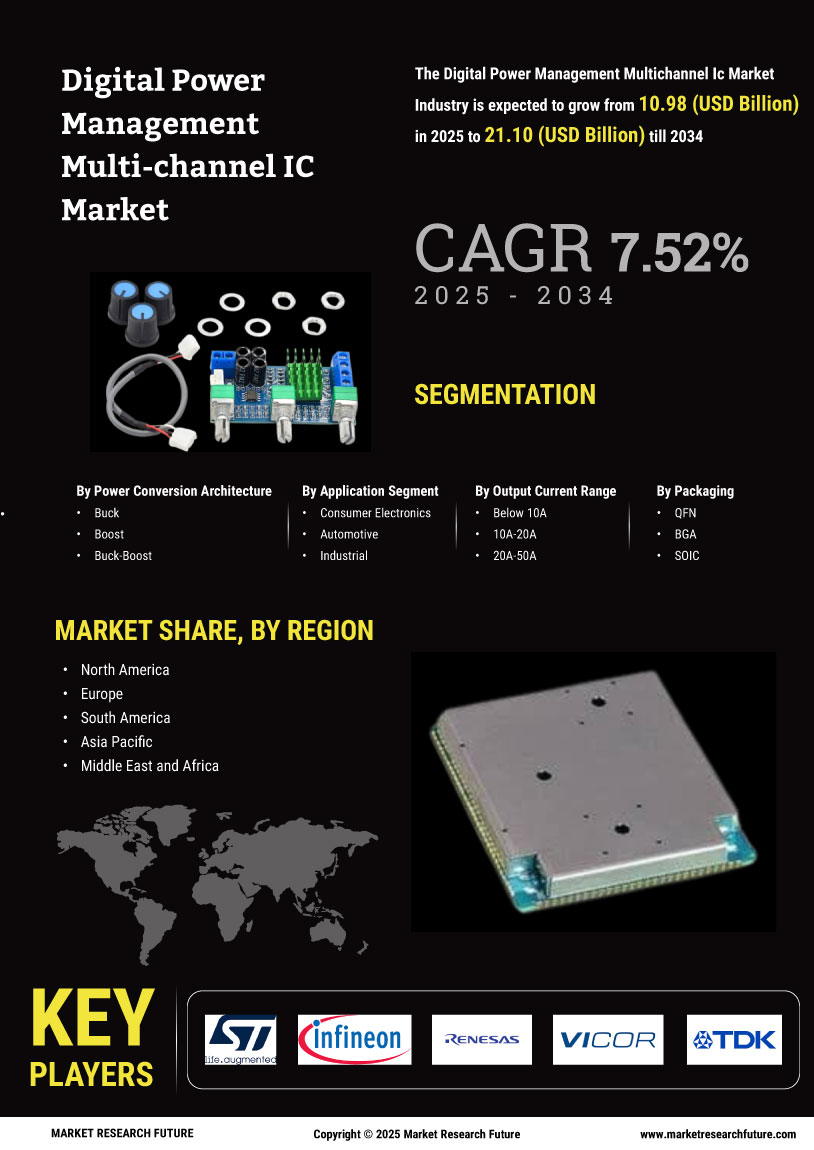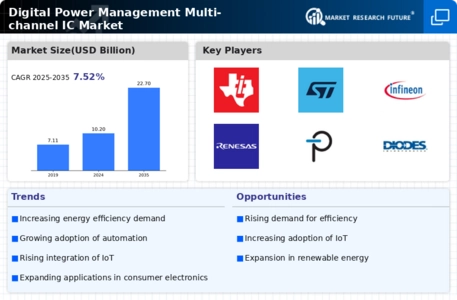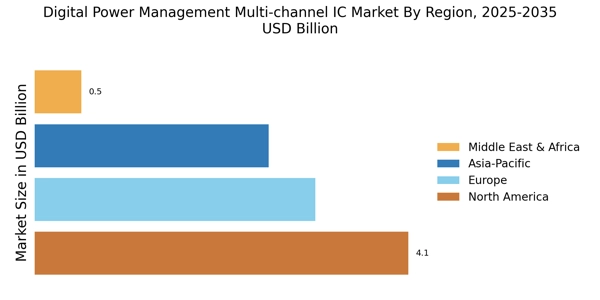Growing Focus on Smart Grids
The growing focus on smart grids is driving the Digital Power Management Multi-channel IC Market. Smart grids require sophisticated power management solutions to optimize energy distribution and enhance grid reliability. Multi-channel ICs are integral to managing the complex power requirements of smart grid systems, facilitating real-time monitoring and control. The smart grid market is anticipated to expand significantly, with investments in infrastructure and technology upgrades. This trend suggests a rising demand for digital power management solutions that can efficiently handle the diverse energy needs of modern grid systems, thereby boosting the multi-channel IC market.
Surge in Consumer Electronics
The surge in consumer electronics is significantly influencing the Digital Power Management Multi-channel IC Market. With the proliferation of smart devices, including smartphones, tablets, and wearables, the need for efficient power management solutions has become paramount. Multi-channel ICs are essential for optimizing power consumption and enhancing battery life in these devices. Market data indicates that the consumer electronics sector is expected to witness a CAGR of approximately 10% over the next few years. This growth is likely to drive the demand for advanced digital power management solutions, as manufacturers seek to improve energy efficiency and performance in their products.
Advancements in Semiconductor Technology
Advancements in semiconductor technology are a key driver for the Digital Power Management Multi-channel IC Market. Innovations in fabrication processes and materials have led to the development of more efficient and compact multi-channel ICs. These advancements enable higher performance and lower power consumption, which are critical in various applications, including telecommunications and industrial automation. The semiconductor market is projected to grow steadily, with a focus on enhancing power management capabilities. As industries increasingly adopt these advanced technologies, the demand for digital power management solutions is expected to rise, further propelling the multi-channel IC market.
Increasing Adoption of Electric Vehicles
The rising adoption of electric vehicles (EVs) is a pivotal driver for the Digital Power Management Multi-channel IC Market. As the automotive sector transitions towards electrification, the demand for efficient power management solutions intensifies. Multi-channel ICs play a crucial role in managing power distribution and optimizing battery performance in EVs. According to recent estimates, the EV market is projected to grow at a compound annual growth rate (CAGR) of over 20% in the coming years. This growth necessitates advanced digital power management solutions to ensure reliability and efficiency, thereby propelling the demand for multi-channel ICs in the automotive sector.
Regulatory Push for Energy Efficiency Standards
Regulatory initiatives aimed at enhancing energy efficiency are influencing the Digital Power Management Multi-channel IC Market. Governments worldwide are implementing stringent energy efficiency standards across various sectors, including industrial, commercial, and residential applications. These regulations necessitate the adoption of advanced power management solutions to comply with energy-saving mandates. The market for energy-efficient technologies is expected to grow, driven by these regulatory frameworks. Consequently, the demand for digital power management multi-channel ICs is likely to increase as manufacturers seek to meet compliance requirements while optimizing energy consumption.















Leave a Comment